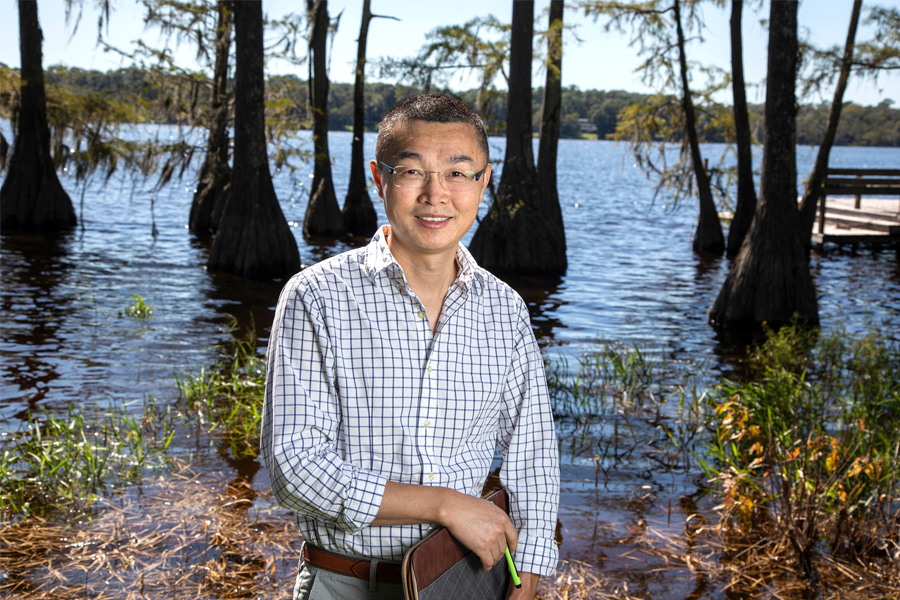Oct 7 2020
A new study performed by FAMU-FSU College of Engineering integrates the projections of climate and land use to predict the availability of water—data that is significant for preparing land-use planners and resource managers.
 Gang Chen, a professor of Civil and Environmental Engineering at the FAMU-FSU College of Engineering. Image Credit: Mark Wallheiser/FAMU-FSU College of Engineering.
Gang Chen, a professor of Civil and Environmental Engineering at the FAMU-FSU College of Engineering. Image Credit: Mark Wallheiser/FAMU-FSU College of Engineering.
This research presented a new method that can be used to generate future climate data for the existing hydrological models. With the integration of more reliable future climate data, the existing hydrological models can more accurately project future water scenarios in the face of climate change.
Gang Chen, Professor of Civil and Environmental Engineering, Florida State University
Professor Chen is heading a group of experts to create new data methods, aiming to enhance hydrological modeling that is crucial for water resource management planning. The researchers’ study was published in the Water journal.
The team applied the new technique to investigate the hydrological processes in the Upper Choctawhatchee River Watershed located in Alabama; this river ultimately flows into Florida and reaches the Choctawhatchee Bay. The researchers incorporated the projections of land use with upcoming climate data to analyze the combined impacts on the hydrological reaction of the watershed.
Using water balance simulations, we discovered that surface runoff and evapotranspiration are dominant pathways for water loss in the Southeast.
Gang Chen, Professor of Civil and Environmental Engineering, Florida State University
Chen is working with Yashar Makhtoumi, a doctoral candidate in the Department of Civil and Environmental Engineering, on new information downscaling methods. The novel process not only offers more data but also enhances the modeling results.
“Few research projects have been done to investigate the combined effects of land use change and climate change using projections,” stated Makhtoumi.
The study results demonstrated that the impacts on water resource variables were seasonal. Surface runoff was responsible for causing the most major changes in several simulations, and evapotranspiration also posed a problem, albeit to a lesser extent. The models denote that by mid-century, more frequent extremes in water balance are expected to pose a major problem.
Even though the study targets a single watershed, the investigators believe that their work might be relevant on a broader scale. That is significant for a state such as Florida, where climate change, population growth, and development are forcing planners and residents to realize the downsides of water supply in the state.
Our model demonstrated that it could capture hydrologic parameters accurately and could be used for future studies of water quality. It can provide the necessary data to determine sustainable conservation practices needed now and in the future, and help manage and protect our water resources.
Gang Chen, Professor of Civil and Environmental Engineering, Florida State University
The study also involved scientists from Florida A&M University and California State Polytechnic University Pomona.
The research work was funded by a $1.2 million grant from the National Institute of Food and Agriculture of the U.S. Department of Agriculture via Florida A&M University.
Journal Reference:
Makhtoumi, Y., et al. (2020) Evaluating Water Balance Variables under Land Use and Climate Projections in the Upper Choctawhatchee River Watershed, in Southeast US. Water. doi.org/10.3390/w12082205.